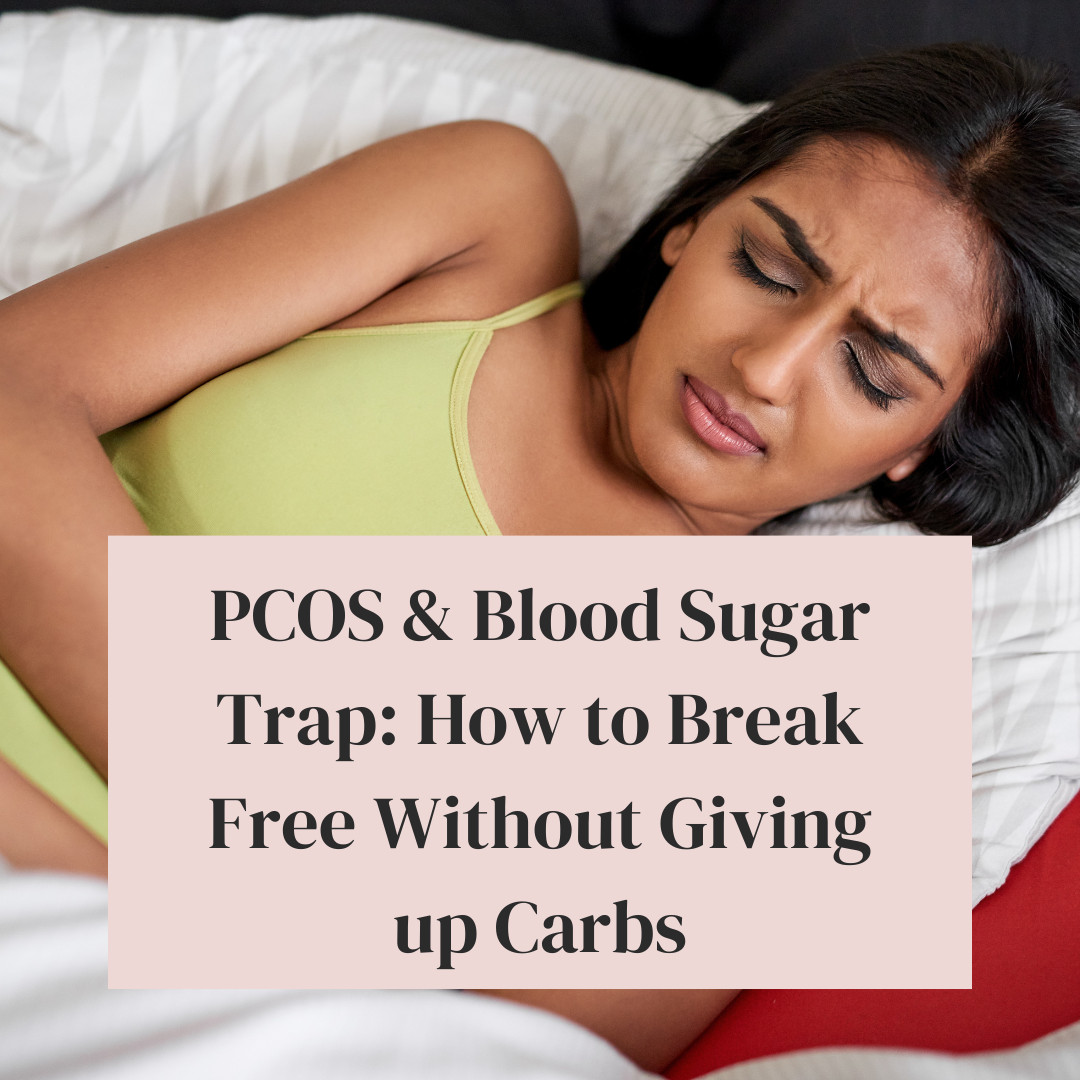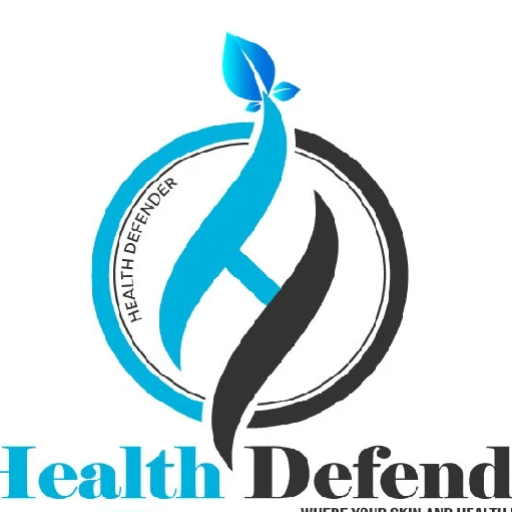
You’ve been told to ditch the bread. Avoid pasta. Run far away from anything that even remotely resembles sugar. And at first, you did it. Because if it meant fewer breakouts, regular menses, less bloating, and maybe—just maybe—finally losing that stubborn weight, it is worth it.
But here you are. Exhausted. Frustrated. Craving sugar and carbs like your body’s screaming for something it’s not getting. And deep down, you’re wondering:
“Is this the only way?”
If you have PCOS and feel like you’re stuck in an endless cycle of food rules, sugar crashes, and shame spirals—this is for you.
Let’s get one thing straight: carbs are not your enemy.
The real culprit? Blood sugar instability. And no one prepares you for how sneaky—and powerful—it can be.
What’s the “Blood Sugar Trap” in PCOS?
It’s that feeling of doing “everything right” and still feeling awful. You’re trying to eat clean, exercise, and even intermittent fasting. But your energy’s tanking, your periods are a mess, your skin’s acting up, and your mood? Don’t even ask.
You May Also Like: Why Your Workouts Might Be Making Your PCOS Worse—And What to Do Instead
Here’s why: PCOS is deeply connected to insulin resistance.
Your cells block insulin (the hormone that helps regulate sugar levels), so your body makes more of it. And excess insulin?
- Triggers high and low blood sugar swings
- Boosts testosterone production
- Causes weight gain around the belly
- Worsens cravings and fatigue
It’s a vicious loop. One that leaves you tired, foggy, and constantly battling your body.
So yeah, it’s no wonder someone told you to cut carbs. But let’s slow down for a second.
Carbs Aren’t the Problem. Spikes Are.
When we think of “carbs,” we think cookies, cake, and comfort food. But carbs are also fruit. Sweet potatoes. Quinoa. Beans. Brown rice. Real, nourishing food.
The issue isn’t that you’re eating carbs—it’s how you eat them.
Eating simple carbs (white bread, sugary snacks, crackers) causes your blood sugar to spike. Then it crashes. Then you’re hungry again. Tired again. Craving again.
But when you pair complex carbs with protein, healthy fats, and fiber, the spike softens. The crash slows. Your energy stabilizes. Your cravings chill out. Your hormones? They start to relax.
It’s not about restriction—it’s about balance.
Signs You’re Stuck in the Blood Sugar Trap
If any of these sound familiar, your blood sugar might be calling the shots:
- You feel shaky, hangry, or lightheaded between meals
- You crash hard after lunch and need coffee or sugar to push through
- You wake up tired, no matter how much sleep you got
- Your periods are irregular, heavy, or missing
- You’ve got intense cravings, especially for sugar or carbs
- You get headaches when you skip meals
- You feel anxious or irritable for no clear reason
Does that sound like you? You’re not broken. You’re on a blood sugar rollercoaster that your body didn’t ask to ride.
So, How Do You Break Free?
Let’s ditch the “all-or-nothing” mindset and lean into simple, doable shifts that work with your body—not against it.
1. Eat carbs with a buddy.
Never eat carbs alone. Always pair them with protein, fat, or fiber.
Example: Instead of plain toast, try avocado toast with an egg. Instead of just fruit, add a spoonful of almond butter. Instead of rice alone, add grilled chicken and veggies.
A Must Read: Tired All the Time with PCOS? The Hidden Connection No One Talks About
2. Build blood sugar-friendly meals.
Follow this basic plate method:
- 40% non-starchy veggies (spinach, broccoli, zucchini)
- 30% high-quality protein (chicken, eggs, tofu)
- 20% complex carbs (quinoa, sweet potatoes, brown rice)
- 10% healthy fat (avocado, olive oil, nuts)
3. Don’t skip breakfast.
Skipping meals—especially breakfast—messes with your blood sugar big time. Eat within 60–90 minutes of waking. Make it protein-rich.
Think: Greek yogurt with chia and berries or eggs with avocado and veggies.
4. Walk after meals.
A 10-minute walk after you eat helps lower blood sugar naturally. It also supports digestion and reduces inflammation. Easy, free, and so effective.
5. Balance your snacks.
Carbs-only snacks (like crackers or fruit) spike blood sugar. Instead, pair carbs with protein or fat: try apple + peanut butter or hummus + carrot sticks.
6. Lower stress and improve sleep.
Easier said than done, but stress and poor sleep spike cortisol—which messes with insulin. Deep breathing, journaling, gentle stretching, and aiming for 7–9 hours of sleep can make a huge difference.
Read Also: Insulin Resistance and PCOS: What’s Really Going On in Your Body
What Happens When You Get This Right?
You don’t have to be perfect. You have to be consistent.
Once your blood sugar stabilizes, here’s what starts to shift:
- Your energy lasts all-day
- You stop feeling hungry 24/7
- Your skin clears up
- Your periods regulate
- The scale begins moving without extremes
- You enjoy eating again
And the best part? You’re not cutting out entire food groups. You’re not scared of fruit. You’re not dreading meals. You’re just eating in a way that supports your body’s unique rhythm.
Let’s Be Real…
Living with PCOS is hard enough without confusing advice that makes you feel like carbs are poison and your body is broken.
You don’t need to diet harder. You don’t need to cut more. You don’t need to fear your food.
You need support. You need nourishment. You need balance.
So, if you’re tired of the blood sugar trap, know this: You’re not alone. You’re not crazy. And you’re not failing.
Your body’s been trying to talk to you. Now, you’re finally listening. And that? That’s where healing begins.
You don’t have to give up carbs to take your power back. You have to give your body what it needs—stability, not stress.
Your hormones will thank you. And you’ll finally feel like you again.







